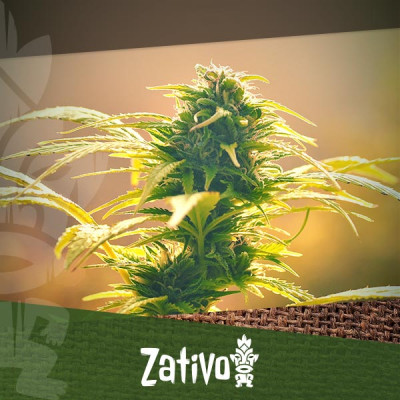Don't have an account?
Register NowYou have to add to cart at least 5 bottles or any program to make checkout.
- BlogWhich Cannabis Strain Should You Choose
Which Cannabis Strain Should You Choose
Published: April 30th, 2023
Categories:
Cannabis Cultivation
Hold up! Sorry, we didn’t mean to startle you. But before you sow those seeds, you need to make sure they’re compatible with your environment. Join us as we go through the key factors you need to consider when growing outdoors, and the best strains for your climate.
Does Climate Matter for Growing Cannabis?
Absolutely! Although all cannabis varieties share the same geographical origin, they have since adapted to wildly different environments across the world. Some strains like hot and dry conditions, whereas others fare much better in temperate regions with a shorter growing season. Likewise, some varieties are more resistant to pests and diseases found in humid areas of the world, while others are more capable of handling those native to cooler, dryer climates.
People that don’t garden are sometimes disconnected from the seasonal rhythms of their local climate. However, becoming familiar with your climate can help you to choose the best cannabis seeds for your region, and achieve the best harvests later down the line.
What Climates Do Autoflowers Like?
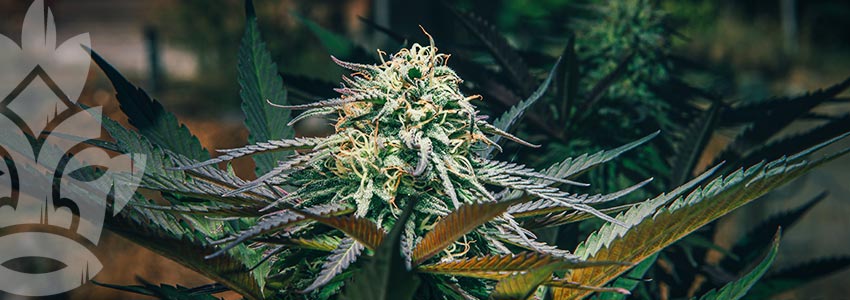
Autoflowering cannabis plants developed as the cannabis species spread northward into areas with a much shorter growing season. Not only did plants adapt by developing a tolerance to colder and harsher conditions, but they also developed the ability to flower based on a genetic clock, as opposed to external light cues. Naturally, these adaptations make many autoflowering strains well-suited to cold climates that experience considerably late and/or early seasonal frosts. However, their impressive pest and disease resistance, and overall resilience, makes them suitable for most climates.
Factors to Consider When Choosing a Strain for Your Climate
Researching the intricacies of your local climate, such as frost dates, average rainfall, and daily sun exposure in your garden, are all useful factors when it comes to determining which cannabis strain to grow outdoors. Below, we examine two key variables that will help you refine this decision further.
Do You Have a Greenhouse or Polytunnel?
We humans are innovative creatures. While many of us choose to settle for the climates we find ourselves in, others leverage ingenious inventions to transcend the limits of their local environment. Both greenhouses and polytunnels serve to extend the growing season, especially in cold northern climates. They also work to trap heat, defend plants against frost, and even keep pests at bay—to a degree.
If you’re keen on growing plants that thrive in warmer climates, such as tall and productive sativas, then installing a large greenhouse or polytunnel will make this a possibility and drastically increase the chances of success. Regardless of what strain you elect to grow, these structures will help you get an early start, and even open the doors to growing and harvesting weed all year long.
How Much Sun Does Your Garden Get?
Cannabis plants have a rather simple set of demands. Meet all of these needs, and you’ll almost certainly obtain a stash for yourself. Among these requirements, adequate light exposure ranks as one of the most important. If you remember anything from biology class, you probably recall that plants harvest carbon from the atmosphere and convert it into sugars by capturing sunlight during the process of photosynthesis. Outdoors, you need to make sure your plants sit in a position that receives enough sunlight while remaining relatively sheltered from high winds.
However, light demands shift among different cannabis strains. For example, large sativa landraces require considerably more energy than small autoflowering plants. With that said, all cannabis plants will only reach their full potential if they receive at least six hours of direct sunlight each day.
What’s the Best Strain for My Location?
A fine question indeed, grower! We wish we had a simple answer for this one, but such a bold statement could lead you astray. Even within the same climate, many different variables influence a strain’s compatibility with your setup. With that in mind, we’ll provide some general guidance to help you get started on the right foot. Below, become acquainted with the best tried and tested cultivars for each type of climate.
Best Strains for Cool Climates
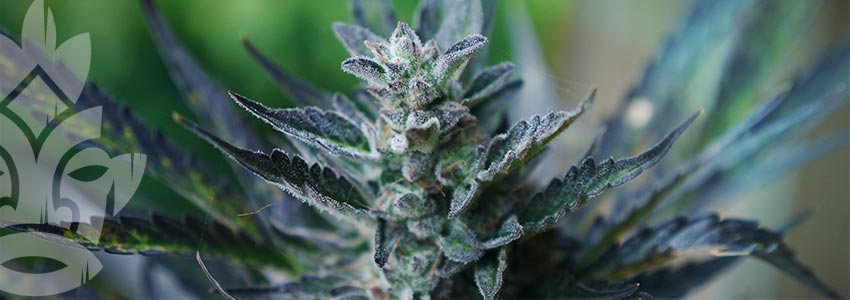
So, you live in a cold place with a short growing season. Instead of sulking about it, get up and grow some of the following beauties. They’re selectively bred to perform well in such environments, providing growers with high-quality bounties every time.
Himalaya Gold
Himalaya Gold descends from parent strains Nepalese and North Indian. Though these landraces derive from rather exotic lands, when you take elevation into account, you’ll soon realise that they’re more than capable of handling the cold. Harnessing a medium THC content, Himalaya Gold exerts a mild body high that will leave you deeply chilled out. The best part? This strain delivers some seriously big yields. Outdoors, she grows tall and churns out up to 1350g/plant. Just make sure you have enough stash jars to cure all of the buds!
Critical Autoflowering
By crossing Critical with a high-performing ruderalis strain, our skilled breeders created an autoflowering version of this classic variety. Overall, Critical Autoflowering possesses a genetic profile of 60% indica, 30% sativa, and 10% ruderalis. Her THC content of 14% might seem low compared to many modern strains. However, don’t disregard her so quickly—her mellow body high will quickly win you over as a perfect option for daytime sessions. This cold-hardy lady maintains a small height of 70–90cm with no training. If you prioritise stealth, apply LST to keep her even smaller. Enjoy a yield of around 80g/plant ready for harvest in 9 weeks after shoots emerge from the soil.
Royal Dwarf
It doesn’t take a plant scientist to figure out how Royal Dwarf got her name. Breeders over at Royal Queen Seeds created this little cultivar specifically for growers seeking to maintain a low profile. It just so happens that she thrives in cooler climates and manages to produce a canopy full of buds way before the first frosts arrive. As the progeny of the legendary Skunk, Royal Dwarf exerts a mellow and physical experience. Watch this variety top out at just 90cm and provide you with up to 80g/plant in as little as 8 weeks after sprouting.
Best Strains for Temperate Climates
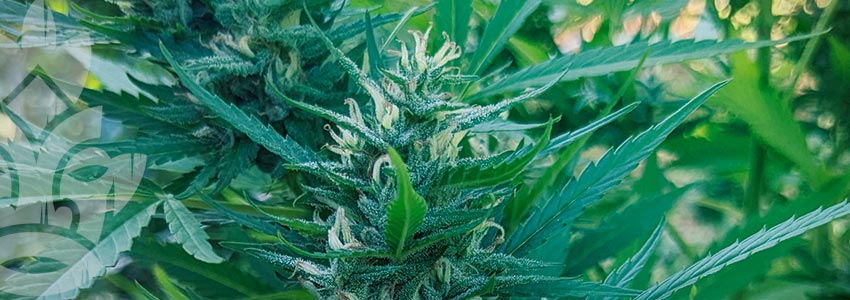
In case you didn’t know, the temperate regions of the Earth are situated between the tropical and polar regions. They’re characterised by moderate rainfall, sporadic drought, and mild summers. So, which cannabis strains thrive in these climates? You’re about to find out!
AK-47
This sativa-dominant hybrid flourishes in temperate regions. When positioned directly under the sun, plants exhibit an innate disease resistance that laughs in the face of rain and humidity. However, place AK-47 under cover, and you’ll get a head start on the growing season. Situate plants in fertile soil rich in organic matter, and watch them grow to a medium height and churn out a rewarding yield. Prepare to trim, dry, and cure these buds after a flowering period of 53–63 days.
White Widow
You’ve heard this name—and for good reason. White Widow has gained notoriety in the world of weed as one of the most enjoyable and reliable strains to grow. Why? Well, it has a lot to do with her superb productivity, high levels of THC, and fabulous terpene profile. At Zativo, we created our own version of this strain by crossing a Brazilian sativa with an undisclosed indica variety. When it comes to a temperate environment, White Widow handles both the dry spells and rainy bouts of summer with aplomb. Outdoors, she grows to a sizeable height of 200cm and produces up to 600g/plant with enough sun exposure.
Girl Scout Cookies
Girl Scout Cookies stands firmly on the pantheon of classic cannabis strains. She earned her place thanks to an astronomical THC level of 23% and a sugary sweet array of terpenes. Breeders at Royal Queen Seeds created their version of this superstar hybrid by harnessing Cookies Forum genetics. The result is a reliable, hardy variety that faces high levels of humidity head-on. Make sure you have enough space in your garden to let her dense yet large canopy peak at a height of 180cm. However, if you’re used to dealing with exceptional levels of rain, top her early to produce multiple colas that are less likely to succumb to mould. Prepare to harvest up to 500g/plant during the middle of October after a flowering period of 8–9 weeks.
Best Strains for Hot Climates
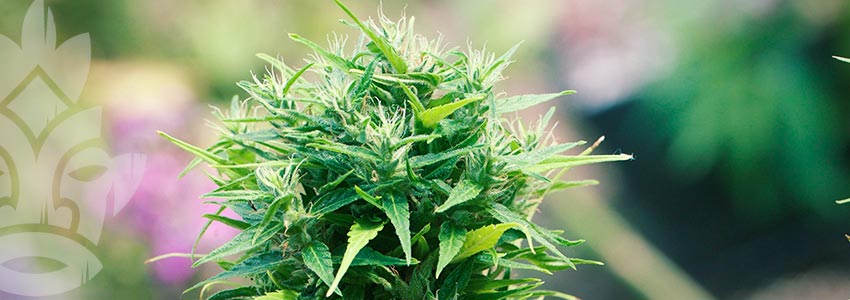
If you live in a hot climate, count yourself lucky! Growers all over the world wish they could experience such a luxury! However, it’s important to be prepared for the dry conditions and potential heatwaves you’re likely to experience during your grow. To increase the odds of success, grow the following varieties!
Sour Diesel
Got sun? Then get some Sour Diesel seeds in the soil! This progeny of Original Diesel, Northern Light, Shiva, and Hawaiian produces high quantities of viscous resin, which acts as a sort of “plant sunscreen” that bounces off UV light! Simply put, Sour Diesel thrives in intense and prolonged heat. Keep her well irrigated, and you’ll receive up to 600g/plant. If you’d rather keep her on the shorter side, top your plants early during the vegetative phase to keep them at around 150cm.
Amnesia Haze
A true legend in the world of weed, Amnesia Haze grows well just about anywhere—including hot climates. This variety has an impressive family tree and descends directly from Southeast Asian genetics, Jamaican Haze, and Afghani-Hawaiian. As you can tell by her lineage, Amnesia Haze has a genome that endows her with the ability to resist heat and thrive in warm climates. Outdoors, she grows to a medium height and will provide you with a rewarding yield that will keep you elevated for months to come.
Dr. Grinspoon
Dr. Grinspoon ranks as perhaps the most unique strain on this list. Named after the famous cannabis researcher, this strain looks different than any other you’ve grown. Her small buds, thin leaves, and lanky stems mean she has a small surface area, which means less space for water to transpire and sunlight to strike. This towering sativa variety imparts a pleasant and motivating head high along with a medium yield.
The Best Strain for You: Choose Wisely
Congratulations, you just did yourself a massive favour. Instead of sowing random seeds and hoping for the best, you just equipped yourself with knowledge that will enable you to achieve the best results possible. Whether you grow in a greenhouse or exclusively in Mother Nature’s embrace, it pays to know what you’re up against!

